The family Collins, purveyors of the Arakai Estate, have had a busy year.
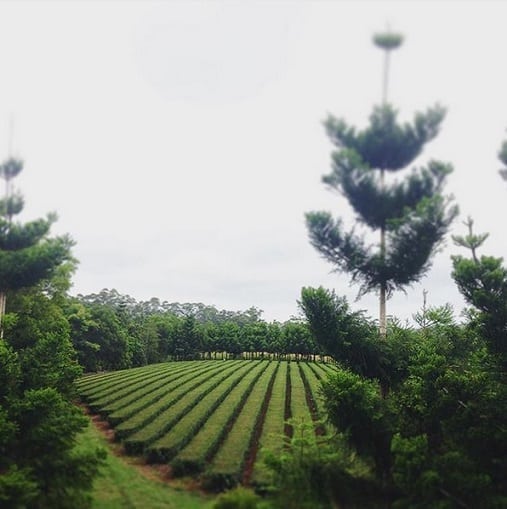
Image owned by the Arakai Estate.
Which is a bit of an understatement.
On top of their usual seasonal tea-‘n- lumber operation, they also made time for an avocado yield, put down a plot for a new home (that they were building themselves), and won a slew of awards at the Australian Tea Festival.
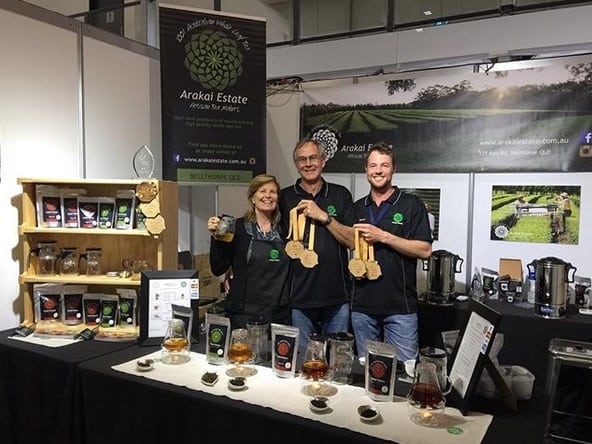
Image owned by the Arakai Estate.
In addition, they also found time to bring on this new minion.

Photo by Kristie Collins.
Seems like a mischievous one.
So, you can imagine my apprehension when I approached Brendon Collins with an unusual request. While I had already written about their teas at length, there was one more thing about their garden that I was incredibly curious about. Their coffee.
Yes, coffee.
Sacrilege, though it may seem, Brendon and his dad were morning cuppa joe type o’ folks. However, instead of importing, or going for middle-of-the-road Australian grown coffee, they figured, “Why not grow our own?” And they did.
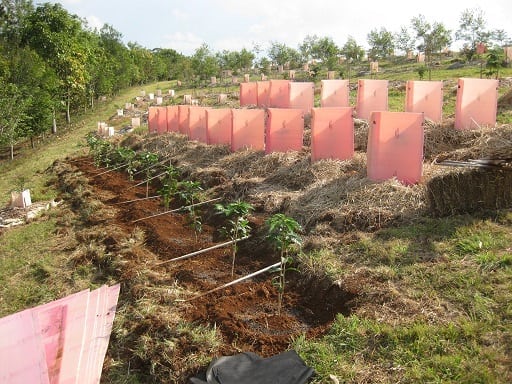
Image owned by the Arakai Estate.
Brendon informed me that he acquired thirty Arabica coffee trees, total. Two of which were an albino subspecies. The plot went in October of 2009, and his first major “harvest” was in 2015.
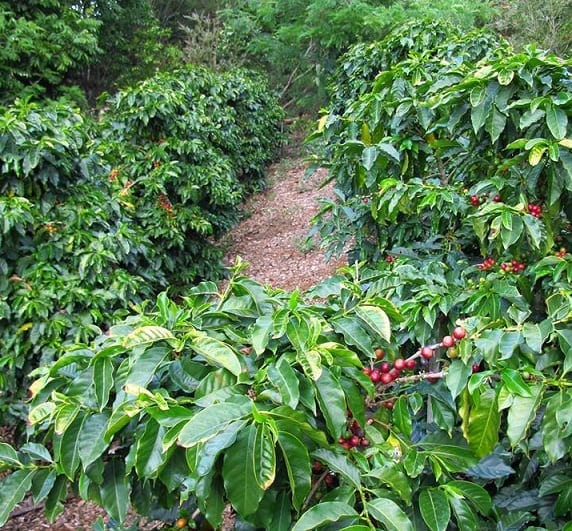
Image owned by the Arakai Estate.
After the cherries were plucked, he subjected them to coffee husking . . . in, perhaps, the most Australian way possible.
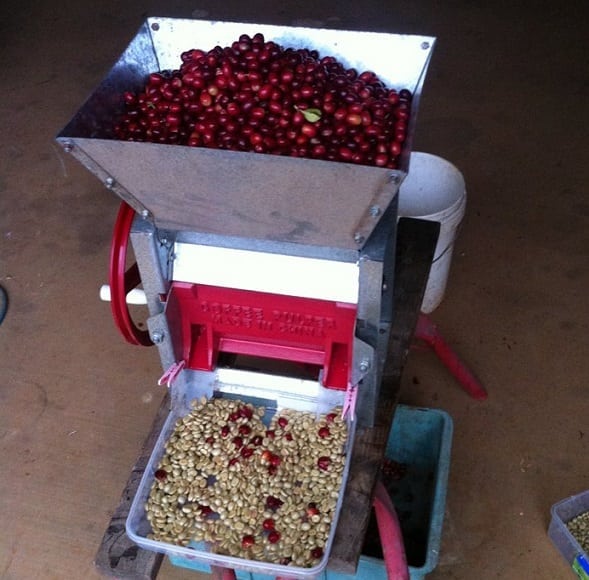
Image owned by the Arakai Estate.
Yes, of course it’s “guzzline”-powered.
Following the husking, the beans are then stored for any number of years until ready to roast. Fun fact: I had no idea that pre-roasted coffee beans could be stored for multiple years without flavor loss. Shows what I know.
At this point, you—fair reader—might be wondering why I’ve devoted so many words in a tea blog talking about coffee. I’ll explain. For years, I’d wondered if it was possible to spot terroir notes in coffee after it was roasted, much like one would in roasted oolongs. The Collins’ Arakai estate provided me with an interesting opportunity; to examine possible terroir notes in both tea and coffee from the same garden.
To date, I only knew of one other garden that grew both coffee and tea simultaneously. And that was a far larger garden. If experience had taught me anything, the taste of the land showed through in smaller gardens. Or at the very least, in smaller, specific plots. Brendon never intended to grow coffee for commercial purposes, merely for personal use. And that endeared me to his efforts.
So, I put forth the question. I asked if I could mooch some of his coffee and compare it to the black and green tea they produced. Of course, I also explained why I wanted to do it. Luckily, Brendon was amenable to the idea.
The day before he sent them out to me, he took some beans and shoved them in his trusty Behmor.
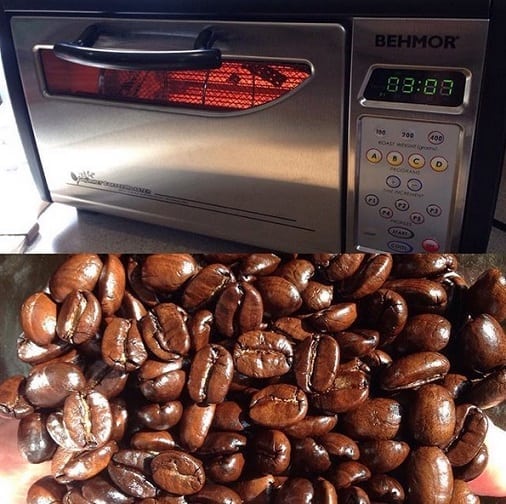
Image owned by the Arakai Estate.
He created two batches for me to peruse over—a dark roast and a medium roast. That and he was generous enough to provide their latest seasonal crop o’ teas for comparison. I hadn’t tried the 2016-17 season, so . . . bonus! A short couple o’ weeks later, the package arrived.
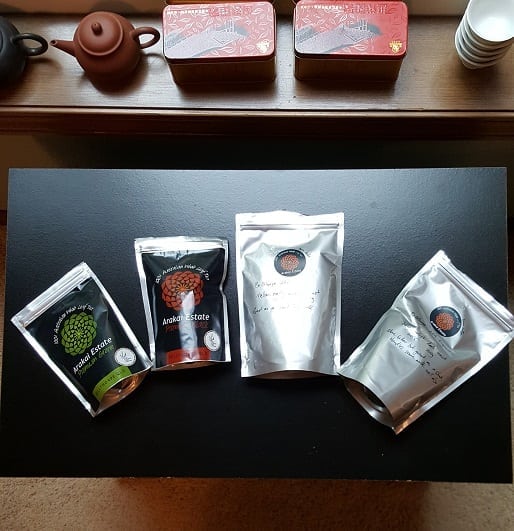
First, I broke out the teas, to take a gander.

The black tea leaves looked . . . well . . . blacker than usual. The green also appeared darker. However, both smelled sweeter than seasons prior. The black tea had the same earth, clay and wintergreen Taiwanese notes as before, only more candy-like. And the green tea had a fruitier aroma than prior brew-ups. All good starts.
The coffee beans were a different story.

I’m not a good one for judging coffee beans on first impression. I’m a seasoned tea guy, but a coffee newb at best. From what I could tell, the roasts on each of them were beautiful and even. The medium roast gave off a nutty, mildly earthy, mocha-like aroma; whereas the darker roast smelled like how I imagine a black bear attack would feel on the nose. Oh, and the dark roast beans were also shinier. Like . . . obsidian shiny. Not sure how relevant that is.
A couple of weeks later, I finally had a day off to play around. I mooched a second French press off of my brother, brought out two gaiwans, and broke out the “fancy” transparent mugs for the experiment.
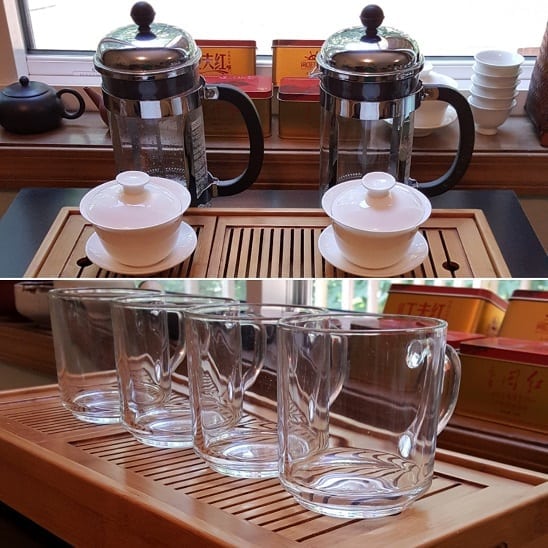
I, then, readied the ol’ coffee grinder (that I hadn’t used in many, many moons), pulverized both set of beans to a course yield, prayed to whatever deity that existed, and then plopped them in each press. For the teas, that was more my comfort zone, I simply brewed them as I remembered—lighter for the green, heavier for the black. The results were . . .
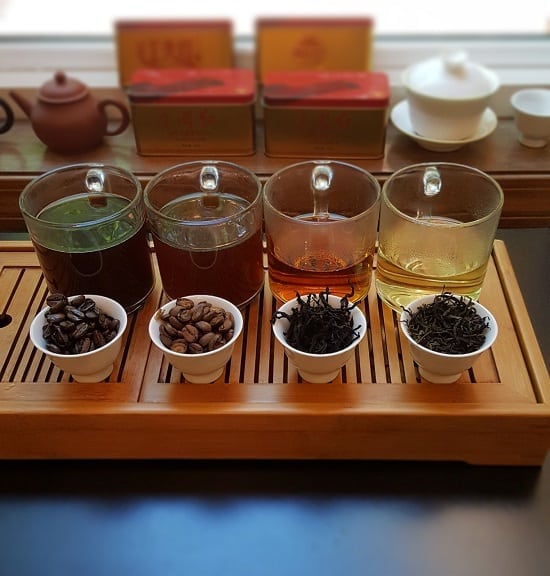
Gorgeous.
The color range on display was a real treat. It totally went from darker to lighter. Both of the brewed coffees smelled like, well, coffee. And the brewed teas were exactly as I remembered them, only sweeter! I dipped into the coffees first.
The dark roast was as advertised—a bitter, chew gut punch of a coffee. However, it was also rather smooth once one got past the heavy forefront. On the other side of the coin was the medium roast, pleasant from start to finish. I even informed Brendon of this . . .

Rather eloquently.
The teas were . . . *blissful swoon-sigh* . . . spectacular. They really outdid themselves this last season. The black tea was at its most Taiwanese-y, reminding me of Shan Cha; not as wintergreen, but much sweeter. The green tea, too, was perfect; mild lemongrass on the forefront, grapy middle, and a candy-sweet finish.
And that’s when I spotted it; the thread between the two coffees and two teas.
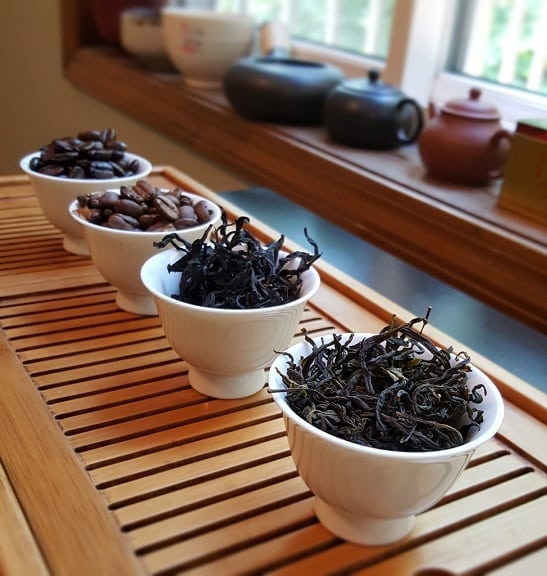
I wasn’t confident that I’d find any similar notes between the four beverages. If I did find any, I assumed it would be only a mild trace of something terrestrial. Boy, was I wrong. When I first tried three different seasons of Arakai’s black and green teas, I noticed a peculiar finish to all of them. A lingering aftertaste, even a bit of huigan, if you will.
Sweet clay.
Both teas had the aftertaste of sweet clay, like someone made Ruby 18-flavored, edible Play-Doh, and then crafted a yixing-style teapot with it. That sweetened earth finish was also found in the coffee, in the exact place as the teas—right at the finish. And it lingered ever so comfortably, like a “happy ending” massage given by a really attractive golem.
There was only one final test left to administer. Some of you long-time readers know where this is going.
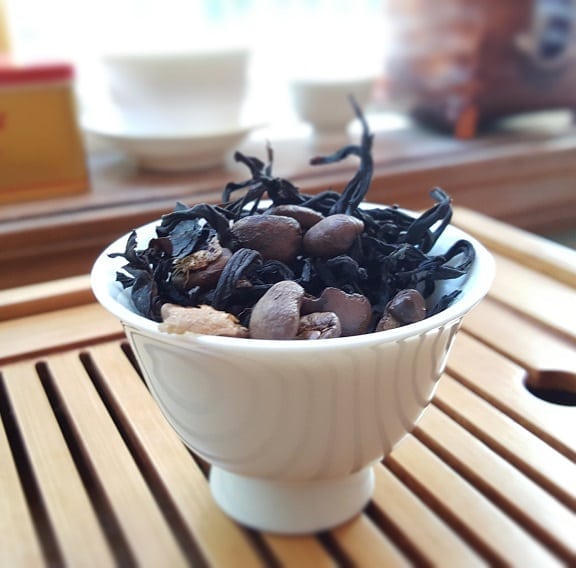
Yep, that’s right. I added medium roast coffee beans to the black tea. Given that they had commonalities, I wondered if they’d blend well together. It ain’t cheating if they’re from the same garden . . . right?
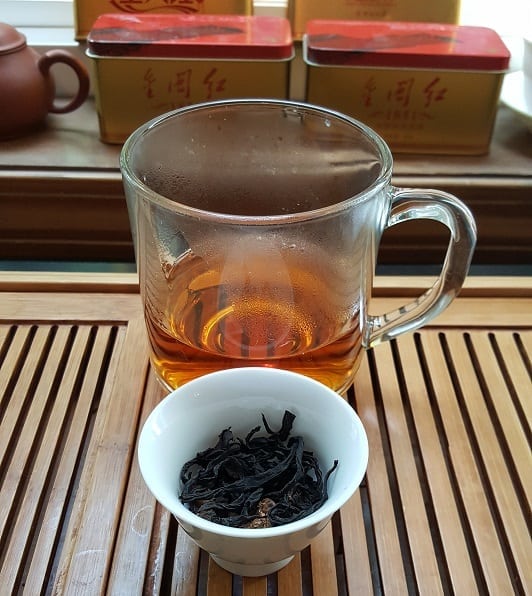
Luckily, they did. The blend started off with a nutty forefront, before transitioning to sweetness, wintergreen and earth, and ending on a note of . . . mocha. The epilogue was all sweet clay.
In closing, I appreciate the Arakai estate for approving of this little experiment. It was eye-opening. Can’t wait to see what sort of things they’ll busy themselves with next.
Wait . . . I’m forgetting something.
Oh yeah.
MIGHTY BIKE HARVESTER!!!
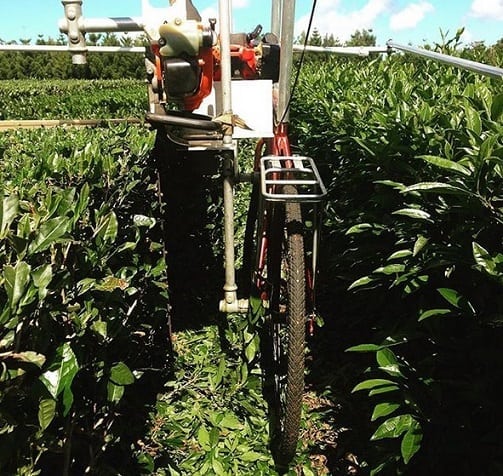
To buy the Arakai Estate’s award winning teas, go HERE.

John
Cool! It’s the usual interesting write-up of a novel region framed in a different review approach. Trying tea from a coffee farm in Laos was part of my early introduction to loose tea awhile back. I think processing being on the basic side held both back a little but I they were nice. That coffee was sweeter than I had ever noticed in any version, even tasting a little like an actual berry. That was also my first introduction to Robusta coffee (they produced both plant types), and the only time I was nearly poisoned by caffeine doing the tasting there. It sounds funny but that part was a bad experience.
Margo Hutchinson
You have guts to try tea and coffee together. The owners of the garden are very
accomplished. Interesting read.
Xavier
I wouldn’t have thought of mixing both tea and coffee.
This is really a bold move 😛
Mandy
Excellent read and review! I was curious about their coffee, knowing that Arakai Teas are definitely ‘the tits’, and then voilà: the combination. Did you just mix them 1:1 and brew them in the plunger – you freak;) Yet to try their latest tea harvest. Can’t wait! Thanks heaps for the post.